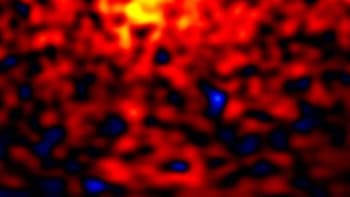The mysterious substance known as dark energy has been fuelling the expansion of the universe for at least nine billion years, according to astronomers in the US. Adam Riess of Johns Hopkins University and colleagues made the discovery by using the Hubble Space Telescope to study ancient exploding stars. They have also concluded that dark energy appears to be related to the "cosmological constant" first proposed – and then retracted -- by Albert Einstein.

In 1998 the astronomical community was astounded when data from Hubble and other telescopes established that the rate of expansion of the universe was increasing – something that physicists are still struggling to explain. Astronomers had long known that the universe is expanding, but the rate of expansion was expected to slow as the finite energy of expansion is depleted by the gravitational attraction that holds the universe together.
Physicists have tried to explain the acceleration in terms of “dark energy”, which boosts the expansion of the universe by counteracting the effects of gravity. To be effective, dark energy must account for about 70% of all energy in the universe — but it has yet to be detected and physicists don’t really know if its behaviour remains constant or if it changes over time.
The most popular explanation for dark energy draws on the “cosmological constant” first proposed by Einstein. A consequence of the constant is that energy density of empty space is the same regardless of whether the universe was expanding. Therefore when one cubic centimetre of the universe expanded to ten cubic centimetres it would somehow end up with ten times more energy.
Now Hubble has shed more light on this mysterious energy. Riess and colleagues used the space telescope study light from 24 type-1a supernovae that exploded 8-10 billion years ago. Such supernovae are considered “standard candles” because they all have a similar brightness and this can be exploited by astronomers to reveal when a supernova occurred and how the universe has expanded in the intervening years.
The observations reveal that dark energy was around nine billion years ago and has been acting in a consistent way ever since. The data suggest that the effect of dark energy was rather weak until about five to six billion years ago when it defeated gravity in a “cosmic tug of war” and the rate of expansion began to increase.
The observations also confirm that the cosmological constant is currently the best explanation for dark energy, casting doubt over alternative theories such as quintessence.
Einstein proposed the cosmological constant in 1917 in order to reconcile his general theory of relatively with the contemporary notion that the universe was not expanding. This changed in 1929 when the US astronomer Edwin Hubble established that expansion was indeed occurring and Einstein retracted the cosmological constant. Now, data from the telescope named after Hubble has resurrected a concept that Einstein called his “biggest blunder”.



